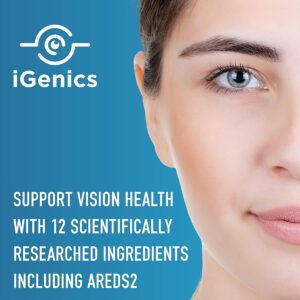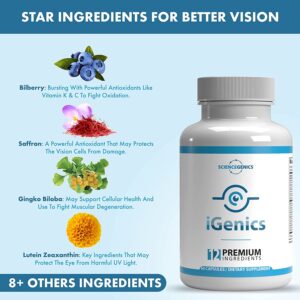When it comes to protecting your vision and maintaining long-term eye health, few nutrients are as vital as lutein and zeaxanthin. These powerful antioxidants, often referred to as the “eye vitamins,” play a crucial role in keeping your eyesight sharp and defending your eyes against age-related damage. While many people are aware of the importance of vitamins like A, C, and E for eye health, lutein and zeaxanthin stand out because of their direct connection to the retina and their protective effect against harmful blue light and oxidative stress.
In this article, we will dive deep into the benefits of lutein and zeaxanthin, explore how they work in the body, identify the best food sources, and discuss why supplementation may be essential for certain people. By the end, you’ll understand why these nutrients deserve a central place in your diet if you want to preserve your eyesight for years to come.
What Are Lutein and Zeaxanthin?
Lutein and zeaxanthin are carotenoids, natural pigments found in fruits, vegetables, and other plant-based foods. They belong to the same family of nutrients as beta-carotene and lycopene, but their functions in the body are quite unique.
- Lutein is often called the “eye vitamin” because of its ability to accumulate in the macula, the central part of the retina responsible for detailed vision.
- Zeaxanthin is closely related and works alongside lutein to filter harmful high-energy light waves such as blue light, which can damage delicate eye cells.
Together, these carotenoids are concentrated in the macular pigment, forming a protective shield that absorbs excess light and neutralizes free radicals before they can harm your eyes.
Why Lutein and Zeaxanthin Are Essential for Your Eyes
The eyes are particularly vulnerable to oxidative stress because of constant exposure to light and oxygen. Over time, this can lead to age-related conditions such as macular degeneration, cataracts, and vision decline. Lutein and zeaxanthin are crucial because they:
1. Protect Against Blue Light Damage
In our digital age, we are exposed to more blue light than ever before due to smartphones, computers, LED lighting, and tablets. Blue light penetrates deeply into the eye and can cause cumulative damage to the retina. Lutein and zeaxanthin act as natural filters, absorbing excess blue light and reducing strain on the eyes.
2. Reduce Risk of Age-Related Macular Degeneration (AMD)
AMD is one of the leading causes of blindness in older adults. Studies, including the AREDS2 (Age-Related Eye Disease Study 2), have shown that higher dietary intake or supplementation of lutein and zeaxanthin significantly lowers the risk of AMD progression. These carotenoids help maintain macular thickness and slow vision deterioration.
3. Lower the Risk of Cataracts
Cataracts develop when proteins in the eye’s lens clump together, leading to clouded vision. Oxidative stress is a major contributor to this process. Lutein and zeaxanthin counteract oxidative damage, potentially reducing the risk of cataract formation or delaying its progression.
4. Improve Visual Performance
Beyond protecting against disease, lutein and zeaxanthin are linked to better contrast sensitivity, faster visual processing, and reduced glare issues. Athletes and drivers often benefit from these improvements, especially in low-light or high-glare situations.
5. Support Long-Term Cognitive Health
Interestingly, research has found that lutein and zeaxanthin also accumulate in the brain. They may improve memory, learning ability, and processing speed, suggesting their protective role extends beyond eye health into cognitive performance.
Best Food Sources of Lutein and Zeaxanthin
The body cannot produce lutein and zeaxanthin on its own, which means you must get them from your diet or supplements. Luckily, many delicious foods are rich in these carotenoids:
- Leafy greens: Kale, spinach, collard greens, and Swiss chard are among the richest sources.
- Vegetables: Broccoli, zucchini, peas, and Brussels sprouts.
- Yellow and orange foods: Corn, pumpkin, squash, and orange peppers.
- Egg yolks: One of the most bioavailable sources, as the fat in yolks enhances absorption.
- Fruits: Kiwi, grapes, orange, and avocado.
Pro tip: Because lutein and zeaxanthin are fat-soluble nutrients, they are absorbed better when consumed with a source of healthy fat, such as olive oil, nuts, or avocado.
Lutein and Zeaxanthin Supplements
While diet should always be the first approach, not everyone gets enough lutein and zeaxanthin from food alone. In fact, studies suggest the average intake in many countries is far below the recommended amount for optimal eye health.
Supplements can help bridge this gap, especially for:
- Older adults at risk of macular degeneration.
- People with poor diets lacking fruits and vegetables.
- Individuals with high screen exposure, such as office workers, gamers, or students.
Common doses range from 10–20 mg of lutein and 2–5 mg of zeaxanthin daily, as used in clinical studies like AREDS2. Always consult your doctor before starting supplements, especially if you have existing health conditions or take medications.
Additional Health Benefits Beyond Eye Health
While lutein and zeaxanthin are most famous for their role in protecting vision, they also provide benefits for overall wellness:
- Skin health: They help protect the skin from UV damage and may improve skin hydration and elasticity.
- Cardiovascular health: Their antioxidant properties may reduce inflammation and improve artery function.
- Brain function: Linked to better mental clarity and slower cognitive decline in aging adults.
These wide-ranging benefits highlight why lutein and zeaxanthin are essential not just for your eyes, but for your overall well-being.
How Much Lutein and Zeaxanthin Do You Need Daily?
There is no official Recommended Dietary Allowance (RDA) for lutein and zeaxanthin, but experts suggest:
- At least 6–10 mg of lutein daily
- About 2 mg of zeaxanthin daily
Most people consume less than 2 mg combined from their diet, which is far below optimal levels for eye protection. This gap underscores the importance of being intentional about your food choices or considering supplementation.
Practical Tips to Boost Your Intake
- Add a handful of spinach or kale to your morning smoothie.
- Cook eggs with sautéed vegetables for a double boost of lutein and zeaxanthin.
- Use avocado or olive oil in your meals to increase absorption.
- Snack on colorful fruits like grapes, kiwi, and oranges.
- Consider a high-quality eye health supplement if diet alone isn’t enough.
Final Thoughts
Your eyes are precious, and protecting them should be a lifelong priority. Lutein and zeaxanthin are two of the most powerful allies you have for maintaining sharp, clear vision and preventing age-related eye diseases. By making conscious dietary choices and considering supplements if needed, you can give your eyes the nutrients they need to thrive in a world filled with blue light, pollution, and oxidative stress.
If you want to safeguard your eyesight for the future, start today by incorporating more lutein- and zeaxanthin-rich foods into your diet. Think of it as an investment in your long-term vision, energy, and quality of life.


